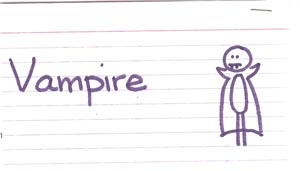This is a simple game for teaching probability. I remember one of my own teachers using it, and I’ve recreated the game board for my own use. The rules are quite simple:
- Each student receives 12 tokens, 2 dice and a worksheet.
- The student places the 12 tokens on any of the 12 spaces on the Start side of the river.
- The student rolls the dice. They may move one token across the river in the space that matches the dice roll.
- The object of the game is to move all of the tokens across the river in the least number of rolls.
The students quickly discover that some numbers come up more often than others, and that a pair of dice will never roll 1. For a more advanced lesson, different means of generating numbers could be used: a 12-sided dice, three 4-sided dice, twelve coins, a spinner and so on.








On Continuing Learning
If I had my fondest wish, I would be a student for the rest of my life. That’s not entirely practical, but even when I’m not in school, I’m inevitably studying or exploring some topic. It might involve international travel, or just sitting down with an episode of Mythbusters; it might be as academic as Japanese writing, or as practical as changing a bicycle tire. Yesterday, I was building a stove out of soda cans; today I am watching a YouTube video on the origins of life. Tomorrow I might be reading a book about Ancient Egypt or soap making or folk music.
Studying these subjects is not just fascinating in its own right. As a teacher, it reminds me of what it feels like to be bewildered, confused, and simply not grasping what has been explained. It reminds me that what’s obvious to the teacher may be far from clear to the student. And when I extend my understanding of the universe around me, I can bring that sense of wonder and curiosity back to my own students.
1 Comment
Posted in Comments, Teaching, Writing
Tagged learning, teaching